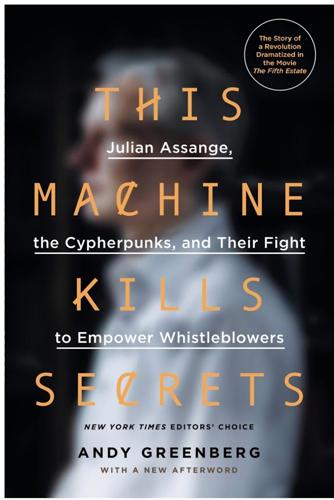
This Machine Kills Secrets: Julian Assange, the Cypherpunks, and Their Fight to Empower Whistleblowers
by
Andy Greenberg
Published 12 Sep 2012
DAVID CHAUM Inventor and academic whose anonymity systems, including DC-Nets and Mix Networks, would inspire the cypherpunks and lead to tools like anonymous remailers and Tor. ERIC HUGHES Mathematician, cryptographer, and cofounder of the cypherpunks who ran one of the Internet’s first anonymous remailers. JOHN GILMORE Former Sun Microsystems programmer who would cofound the cypherpunks as well as the Electronic Frontier Foundation. JOHN YOUNG Architect, activist, and cypherpunk who founded Cryptome.org in 1996, a leak-focused site that has published thousands of names of intelligence agents and their sources, along with hundreds of secret encryption – and security-related documents.
…
A wayward Mormon who grew up near Washington, D.C., and in Salt Lake City, Hughes shared May’s frontier style of cowboy hats and leather, though instead of a beard he wore a blazing red goatee. He also shared May’s libertarian ideals, and the sense that cryptography would help to keep the government’s tendrils safely hogtied. The pair had met at a party thrown by their libertarian hacker friend John Gilmore, a ponytailed and balding software developer whose sad eyes hid a fiercely independent streak. As the fifth employee of Sun Microsystems, Gilmore had struck it rich in software just as May had in hardware, and retired from the world of Silicon Valley to pursue his digital whims and libertarian ideals.
…
The next morning, May and Hughes went out to buy bagels and brainstorm about the potential of the group that had begun to coalesce around their meeting. Why limit the club to the physical world, for instance, when the real mass of potential cryptography fanatics was online? As May had years earlier realized, cyber-utopias would have to be created on the Internet, not in someone’s living room. They later asked John Gilmore if he would host an e-mail list on the server of his personal site, Toad.com, and he eagerly agreed. But it was Jude Milhon, Hughes’s girlfriend several decades his senior, who provided the group’s name. At the time, science fiction authors like William Gibson and Neal Stephenson had adopted the “cyberpunk” genre, stories of bohemian hackers fighting steely megacorporations in virtual worlds.
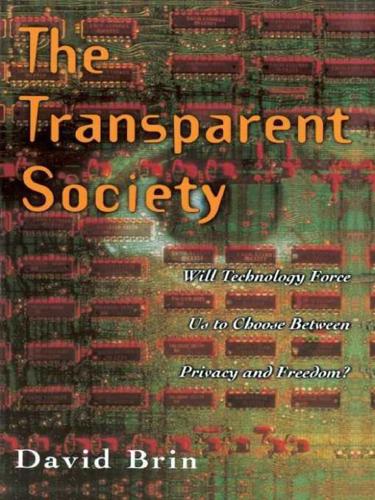
The Transparent Society: Will Technology Force Us to Choose Between Privacy and Freedom?
by
David Brin
Published 1 Jan 1998
Recent years have witnessed widespread calls to “empower” citizens and corporations with tools of encryption— the creation of ciphers and secret codes—so that the Internet and telephone lines may soon fill with a blinding fog of static and concealed messages, a haze of habitual masks and routine anonymity. Some of societyʼs best and brightest minds have begun extolling a coming “golden age of privacy,” when no one need ever again fear snooping by bureaucrats, federal agents, or in-laws. The prominent iconoclast John Gilmore, who favors “law ʻnʼ chaos over law ʻnʼ order,” recently proclaimed that computers are literally extensions of our minds, and that their contents should therefore remain as private as our inner thoughts. Another activist, John Perry Barlow, published a widely discussed “Declaration of Independence for Cyberspace” proclaiming that the mundane jurisdictions of nations and their archaic laws are essentially powerless and irrelevant to the Internet and its denizens (or “netizens”).
…
At one extreme of this trend are those who demand legal recognition that individuals have a basic right of ownership over any and all data about themselves: no one should be able to use any fact or datum concerning you—not even your name—without your explicit permission. Supporting a quite different approach are some of the most vivid and original thinkers of the information age. John Gilmore, Esther Dyson, John Perry Barlow, and others on the (roughly) libertarian wing were in the vanguard fighting against both the Clipper proposal and the Communications Decency Act. Seeing little need or value in new laws, they hold that technology will be a key factor in defending liberty during the coming era.
…
In a great paradox of our time, the deep rifts dividing humanity during the Cold War ultimately led to a supremely open and connecting system. The same traits responsible for the Internetʼs hardiness in the face of physical destruction seem also to protect its happy chaos against attempts to impose rigorous discipline, a point illustrated in a popular aphorism by John Gilmore: “The Net perceives censorship as damage, and routes around it.” I plan to reconnect with this thought in later chapters, for it bears directly on the issue of a transparent society. Censorship can be seen as just one particular variant of secrecy. In the long run, the Internet and other new media may resist and defeat any attempt to restrict the free flow of information.
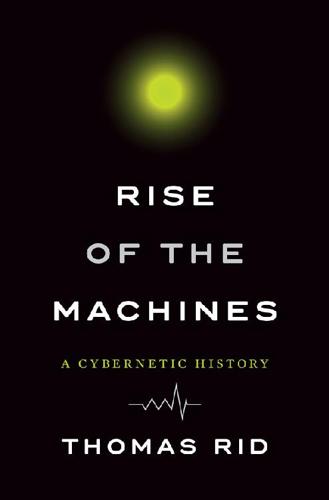
Rise of the Machines: A Cybernetic History
by
Thomas Rid
Published 27 Jun 2016
He covered and shaped the early tech counterculture and cofounded the Electronic Frontier Foundation. In a military library in Virginia, EFF cofounder John Gilmore discovered a coveted classified document that the NSA had refused to release to him, and he confronted the government. Here he celebrates his victory in late 1992. Timothy C. May, an early Intel employee, was the most eloquent cypherpunk and one of the most radical. He wrote the “Crypto Anarchist Manifesto,” came up with BlackNet in August 1993, and coined phrases like “crypto = guns.” Tim May (left), John Gilmore (right), and Eric Hughes, who appeared wearing these masks on the cover of Wired magazine’s second issue, in May 1993, their PGP fingerprints written on their foreheads.
…
People were just beginning to use e-mail accounts, so an e-mail list seemed the best and most open way to network the group. Unlike on the WELL up in Sausalito, no membership fees were required and, more important, everyone could sign up anonymously. The list was open; no finger files wanted. Everybody could subscribe by simply e-mailing cypherpunks-request@toad.com. The list was hosted on a machine owned by John Gilmore, an early San Francisco–based crypto activist with a long mane, a flimsy beard, and a keen interest in recreational drugs. Gilmore was one of five original employees at Sun Microsystems, and like May, he was independently wealthy at a relatively young age. Cypherpunk hailed from science fiction.
…
Like any reputable subculture phenomenon, the cypherpunks had their own jargon: pseudonyms and anonymous handles simply became “nyms,” for instance, and they called themselves simply “c-punks.” Steven Levy and Kevin Kelly attended some of the first Palo Alto c-punk meetings. Levy portrayed the new movement in a famous cover story for Wired, in the magazine’s second issue, which came out in May 1993. On the cover were Eric Hughes, Tim May, John Gilmore, holding up an American flag, their faces hidden behind white plastic masks, Gilmore even sporting an EFF T-shirt complete with the internet address of the then newly founded Electronic Frontier Foundation. The geeky rebels had their PGP fingerprints written on the foreheads of the masks.32 The same year, in the summer of 1993, Kelly published a long story about the crypto anarchists in the anniversary issue of the Whole Earth Review, guest-edited by its founder, Stewart Brand.
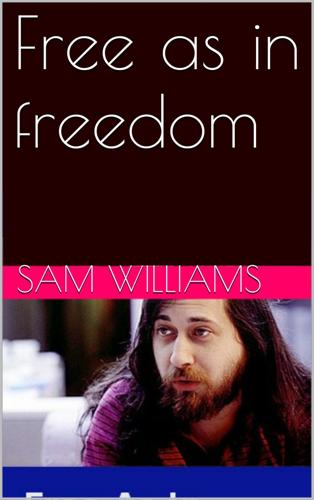
Free as in Freedom
by
Sam Williams
Published 16 Nov 2015
"I think asking other people to accept the price was, if not unique, highly unusual at that time," he says. The GNU Emacs License made its debut when Stallman finally released GNU Emacs in 1985. Following the release, Stallman welcomed input from the general hacker community on how to improve the license's language. One hacker to take up the offer was future software activist John Gilmore, then working as a consultant to Sun Microsystems. As part of his consulting work, Gilmore had ported Emacs over to SunOS, the company's in-house version of Unix. In the process of doing so, Gilmore had published the changes as per the demands of the GNU Emacs License. Instead of viewing the license as a liability, Gilmore saw it as clear and concise expression of the hacker ethos.
…
Prompted by a conversation on Usenet, Gilmore sent an email to Stallman in November, 1986, suggesting modification: You should probably remove "EMACS" from the license and replace it with "SOFTWARE" or something. Soon, we hope, Emacs will not be the biggest part of the GNU system, and the license applies to all of it.See John Gilmore, quoted from email to author. Gilmore wasn't the only person suggesting a more general approach. By the end of 1986, Stallman himself was at work with GNU Project's next major milestone, a source-code debugger, and was looking for ways to revamp the Emacs license so that it might apply to both programs.
…
In a 1999 essay, Tiemann recalls the impact of Stallman's Manifesto. "It read like a socialist polemic, but I saw something different. I saw a business plan in disguise."7. See Michael Tiemann, "Future of Cygnus Solutions: An Entrepreneur's Account," Open Sources (O'Reilly & Associates, Inc., 1999): 139. Teaming up with John Gilmore, another GNU Project fan, Tiemann launched a software consulting service dedicated to customizing GNU programs. Dubbed Cygnus Support, the company signed its first development contract in February, 1990. By the end of the year, the company had $725,000 worth of support and development contracts.
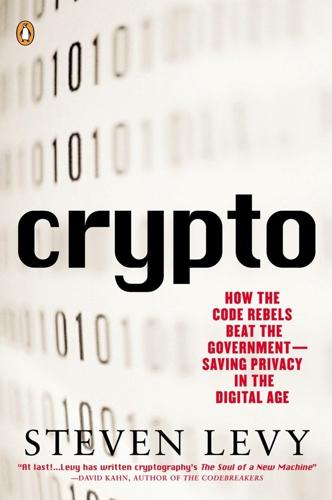
Crypto: How the Code Rebels Beat the Government Saving Privacy in the Digital Age
by
Steven Levy
Published 15 Jan 2002
John Kasdan kindly allowed me to audit his cyberlaw course and Matt Blaze and Joan Feigenbaum welcomed me to their computer science course on cryptography. Mark Rotenberg, David Banisar, and David Sobel of the Electronic Privacy Information Center gave me access to the astounding documents coughed up by the government under their skillful use of the Freedom of Information Act. John Gilmore and his lawyer Lee Tien also provided me with armloads of declassified materials. Roger Schlafly sent me a huge pack of documents related to RSA and Cylink. Simpson Garfinkel e-mailed me notes of interviews he did for his book, PGP. (Other suppliers will remain nameless, but thanks to them, too.)
…
Xerox, as a huge government contractor, quietly agreed to the agency’s request. Normally, that might have been the end of it. But in this case, apparently one of the outside reviewers of Merkle’s paper was upset that the agency had spiked it—so upset that he or she slipped it to an independent watchdog, a computer-hacker millionaire named John Gilmore. Gilmore had a weapon that wasn’t available a decade earlier, when the prepublication process was initiated: the Internet. One of the most popular Usenet discussion groups on this global web of computers was called sci.crypt. It was sort of an all-night-diner equivalent of the yearly Crypto feasts in Santa Barbara, featuring a steady stream of new ideas, criticism of old schemes, and news briefs from the code world.
…
Not to sit around and bullshit, but to actually produce, à la Zimmermann, the tools that would arm the general public against cyberthieves, credit bureaus, and especially the government. In the next few weeks, they enlisted the aid of some influential figures in the antigovernment crypto community. One forceful ally was thirty-seven-year-old John Gilmore, a gentle computer hacker with long thinning hair and a wispy beard (when he stood beside Eric Hughes, the two of them looked like a geeky version of the cough-drop-icon Smith Brothers). Gilmore had made a small fortune from being one of the original programmers at Sun Microsystems—he had been employee number five—but left in 1986.
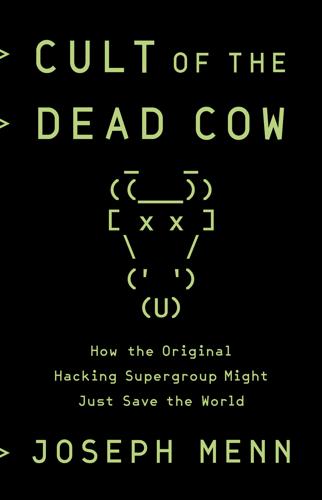
Cult of the Dead Cow: How the Original Hacking Supergroup Might Just Save the World
by
Joseph Menn
Published 3 Jun 2019
Even so, Barlow continued to say he was more worried about the government restricting or monitoring computers than he was about the punks. He met the two hackers for Chinese food, reaffirming his belief that they were not the main enemy. Then he convinced Boston software entrepreneur Mitch Kapor, inventor of the modern electronic spreadsheet, and libertarian engineer John Gilmore to join him in founding the Electronic Frontier Foundation. (Gilmore would soon host the Cypherpunks mailing list, which would be home to the most public-spirited cryptographers of the next two decades, along with hackers, assorted freethinkers, and the probable inventor of Bitcoin.) The trio’s long-term goal was to extend the freedom of the press, freedom from unreasonable search and seizure, and as many other rights as possible to the digital realm.
…
Misha had moved to San Francisco in 1992 and had bragged about it to Luke and the others back east at every opportunity. One of Misha’s first contacts was the editor of a magazine called Mondo 2000, who reprinted his Information America piece and introduced him to her boyfriend, Eric Hughes, who was about to start the Cypherpunks mailing list, hosted by John Gilmore. Misha spread the word among hackers. The dot-com boom that began with Netscape’s initial public offering in 1995 lured more waves of cDc members and friends to California. Dylan Shea took a job at the Mountain View headquarters of Netscape itself in 1996, and when the company offered to pay for his move, he brought out Luke’s gear as well.
…
After he had dropped out of graduate school in 1991 and traveled to El Salvador, Ball had moved to one troubled country after another, methodically drafting programs, installing protective cryptography, and compiling databases of some of the worst human rights horrors in the world. He presented at the Computers, Freedom, and Privacy conference in 1998 in Austin and debated crypto policy with an official at the Department of Justice who wanted back doors and weak encryption. It was there he met Cypherpunks mailing list sponsor and EFF cofounder John Gilmore and Phil Zimmerman, the inventor of Pretty Good Privacy (PGP) email encryption, who had also battled the federal government. “I ended up being friends with these people forever,” Ball said. In Las Vegas, Ball and the others were speaking in a hot tent pitched on a hotel roof, because no ballroom was big enough.
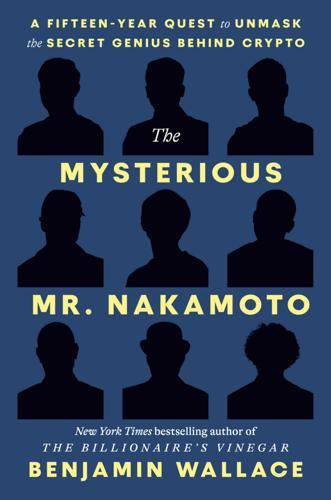
The Mysterious Mr. Nakamoto: A Fifteen-Year Quest to Unmask the Secret Genius Behind Crypto
by
Benjamin Wallace
Published 18 Mar 2025
GO TO NOTE REFERENCE IN TEXT the same class as Tomahawk cruise missiles: 58 FR 39287, Code of Federal Regulations, Part 121—The United States Munitions List, July 22, 1993. GO TO NOTE REFERENCE IN TEXT pursuing possible legal action against him: Peter H. Lewis, “Software Author Focus of U.S. Inquiry,” The New York Times, April 10, 1995. GO TO NOTE REFERENCE IN TEXT John Gilmore: Dennis Roddy, “Grounded: Millionaire John Gilmore Stays Close to Home While Making a Point About Privacy,” Pittsburgh Post-Gazette, February 26, 2005. GO TO NOTE REFERENCE IN TEXT Jude Milhon: Levy, Crypto, 211. GO TO NOTE REFERENCE IN TEXT “Cypherpunks write code”: Eric Hughes, “A Cypherpunk’s Manifesto,” in Ludlow, Crypto Anarchy, 81–83.
…
Phil Zimmermann, a bearded former antinuclear activist, had released PGP, which stood for Pretty Good Privacy and was freeware that made public-key crypto available to anyone. Just load a copy onto your computer, and you could encrypt your emails before sending them. And the U.S. government, which deemed strong cryptography a munition in the same class as Tomahawk cruise missiles, was pursuing possible legal action against him. May, Hughes, and John Gilmore, an early employee of Sun Microsystems who’d also been able to retire early and then cofounded the Electronic Frontier Foundation, wanted to put cryptography in the hands of the masses. After May read his manifesto, a rare female attendee named Jude Milhon, who was known as St. Jude, proposed that the group be called “cypherpunks.”
…
After midnight, one night that August, he drove south of Los Gatos, past the worst of the city glow to the foothills of the Santa Cruz Mountains, set up a lounge chair, covered himself with blankets and sweaters, and gazed up at the clear night sky. For the next two hours, he daydreamed about comet mining and space colonies and “Jupiter-sized brains” and watched dozens of dazzling meteors streak across the heavens, including “a spectacular bursting fireball.” Two days after that, he was at a cypherpunks meeting with all the big names—John Gilmore, Eric Hughes, Tim May, Whit Diffie (co-inventor of public-key cryptography!). At the meeting, Romana Machado, who was both a software developer for Apple’s handheld Newton device and a “glamor model” who went by Cypherella (Playboy, November 1985), debuted Stego, a piece of free software she’d written that let you hide a message in an image.
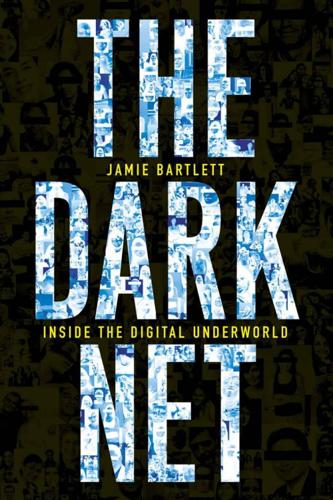
The Dark Net
by
Jamie Bartlett
Published 20 Aug 2014
In 1987, Usenet administrators forced what became known as the ‘Great Renaming’, categorising all the haphazard groups into seven ‘hierarchies’. These were: comp.* (computing), misc.* (miscellaneous), news.*, rec.* (recreation), sci.* (science), soc.* (social) and talk.* – under which users could start their own relevant subgroups. To name the group, you took the main hierarchy name, and then added further categories.fn2* John Gilmore, who would go on to co-found the cypherpunk movement with Tim May and Eric Hughes in 1992, wanted to start a group about drugs, called rec.drugs. His request was turned down by the administrators. So Gilmore and two experienced Usenetters created their own hierarchy, which would be free of censorship.
…
Amir believes you should be free to be whoever, say whatever and do whatever you want online without censorship or surveillance – and that such freedoms will lead to political revolutions. He is a cypherpunk. The Mailing List One day in late 1992, retired businessman Tim May, mathematician Eric Hughes and computer scientist John Gilmore – the creator of alt.* – invited twenty of their favourite programmers and cryptographers to Hughes’ house in Oakland, California. After taking a degree in physics at the University of California at Santa Barbara, May went to work for Intel in 1974, where he made a brilliant breakthrough in redesigning Intel’s computer memory chips.
…
He told Young of his plan to create a new organisation, which he called WikiLeaks, which he believed would change the world: ‘New technology and cryptographic ideas permit us to not only encourage document leaking, but to facilitate it directly on a mass scale. We intend to place a new star in the political firmament of man.’ For almost a decade, the cypherpunk mailing list was the centre of the crypto world. Hundreds of people used it to propose and learn ciphers, evade detection, discuss radical politics. It was finally discontinued in 2001 when John Gilmore booted it from his host, toad.com, for reasons not entirely clear – Gilmore claimed it had ‘degenerated’. But it had a remarkable track record: anonymous remailers were everywhere, an anonymous browser that allowed users to browse the web without anyone being able to track them was in development, the whistleblowing site Cryptome was becoming a thorn in the side of intelligence agencies.
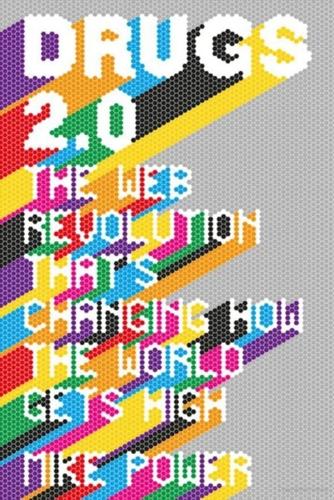
Drugs 2.0: The Web Revolution That's Changing How the World Gets High
by
Mike Power
Published 1 May 2013
In time the subsections in newsgroups covered every subject known to woman and man, and in an age before search engines, they were one of the best ways to find information online – or anywhere, since they were populated by the most extraordinarily helpful, altruistic and technologically adept users in the world. Computer scientist Brian Reid, and John Gilmore (an early internet pioneer, civil libertarian, entrepreneur and techno-renaissance man whose work around cryptography, censorship and drug law reform make him an unsung early hero of the digital age – and who is also, judging by his love of tie-dye and several anecdotes, no stranger to a dose or three of psychedelics) felt the reorganization would limit freedom of speech.
…
In the early 1990s, Stuart Brand set up The Well, a legendary bulletin board that was an early gathering point for intellectuals and cyberutopians. The Well, or Whole Earth ‘Lectronic Link, was a virtual community that hosted conversations between some of the web’s earliest champions including John Gilmore. It was also an important meeting point for fans of the Grateful Dead, confirming for ever the association between high-tech geekery and psychedelics that would result in the virtualization of the illegal drugs market in the twenty-first century. Newsgroups disseminated the solid information on drugs that had been so lacking earlier.
…
They asked the Tor volunteers to form a company, in order to make the service and the network more widely available, which they did. ‘At the time we were still independent contractors with the EFF [the online freedom of speech group, the Electronic Freedom Foundation, set up by .alt newsgroup creator John Gilmore] and the American Department of Defence at the same time, which made for some strange meetings!’ says Lewman. Tor is not just used by those engaged in illicit activity. The vast majority of Tor users are simply people who want privacy when they go online, as the information gathered on us by search engines and social media grows daily.
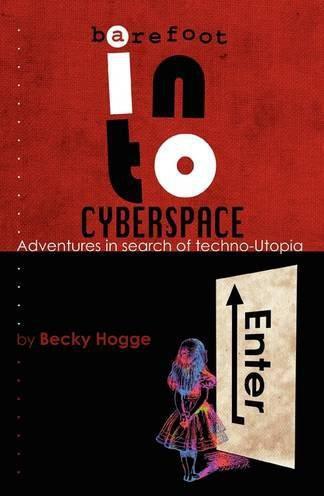
Barefoot Into Cyberspace: Adventures in Search of Techno-Utopia
by
Becky Hogge
,
Damien Morris
and
Christopher Scally
Published 26 Jul 2011
Bureaucracies, Barlow argues in Crime and Puzzlement, will naturally over-react to poorly-understood “cyber-threats”, and in trying to do the job of parents regulating the behaviour of childish online trespassers, will crush the new-found freedom of the online sphere for the grown-ups, too. It was these experiences which contributed to Barlow’s decision to found the Electronic Frontier Foundation, the world’s first digital civil liberties organisation, along with EFF co-founders Mitch Kapor and John Gilmore. The EFF initially took on legal cases of hackers targeted by the FBI’s two-year crackdown on computer-related activities, Operation Sundevil, as well as academic researchers and entrepreneurs whose work attracted the attention of the authorities. But although so-called “impact litigation” remains a central part of the its operations to this day, as legislators began to ponder how to regulate the ’net, the EFF’s work quickly stretched beyond the courtroom and into the corridors of Washington DC.
…
Now they argued that “internet censorship is becoming a global norm”, with “many of the legal mechanisms that legitimate control over cyberspace… led by the advanced democratic countries of Europe and North America”, and where “the industrialized North is establishing norms that are only too readily propagated and adopted by repressive and authoritarian regimes elsewhere”. EFF co-founder John Gilmore told Time magazine in 1993 that “The ’net interprets censorship as damage and routes around it.” In the space between their two reports, the ONI had observed a shift in governments’ approaches to controlling the information that circulates online. In 2008, when states were still using a broadcast model to understand the internet, with each website a channel that could be turned on and off, and each web user a viewer, Gilmore’s observation held and state efforts to control the information environment didn’t work.
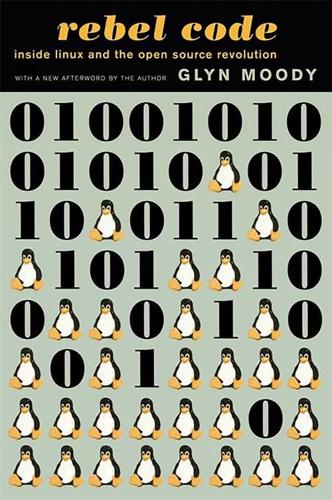
Rebel Code: Linux and the Open Source Revolution
by
Glyn Moody
Published 14 Jul 2002
As a result, Tiemann explains, “I sort of felt if I was just another voice in the wilderness I wouldn’t be able to get any more critical mass than he got. “So I explicitly wanted to recruit some cofounders,” he says, “to try to create a level of critical mass that would catalyze the business. And I talked with many people about this idea, and the only ones that took me seriously were the other two cofounders,” John Gilmore and David Henkel-Wallace. “John Gilmore’s e-mail handle is ‘gnu,’” Tiemann explains, “and some claim that he had nicknamed the GNU project.” Moreover, “John was employee number 5 at Sun, renowned programmer and civil libertarian, and also independently wealthy because of his Sun stock.” The other partner, David Henkel-Wallace, was somebody Tiemann had met while doing his research on compilers, and who “also seemed reasonably bright,” he says.
…
The challenge was we knew that we wanted to be support services for the software, [but] we didn’t have [our own] product at the time.” In fact, “it took about three years before we really had a credible support offering,” he says, and adds, “we probably lost money on every support deal we did before 1992.” While they were casting around for a product, one of them came up with what, in retrospect, was an interesting idea. “John Gilmore proposed that we write a free kernel for the 386,” Tiemann recalls. This was in 1990, fully one year before Linus would sit down and do exactly that. “I always considered myself to be an unprejudiced individual,” Tiemann explains, “but the thought of taking something like Unix and running it on an Intel 386 just boggled my mind.
…
“In 1995, Larry McVoy”—author of the Sourceware document—“came to me,” Tiemann explains, “and said, ‘There’s this company in North Carolina that’s doing Linux, and they’re really making a lot of money for the number of people they’ve got. You ought to check it out.’ And I tried to convince my partners at that time that we attempt to acquire Red Hat, and they would have none of it. In 1990-91, I said no to John Gilmore, and in 1995 he said no to me. So there was a long window of opportunity that we simply ignored.” The problem was hardly lack of vision. After all, in 1992, Tiemann had made a speech to the Sun Users Group conference in which he not only assessed correctly the strengths of the free software movement, but predicted it would become the dominant force in the following years.
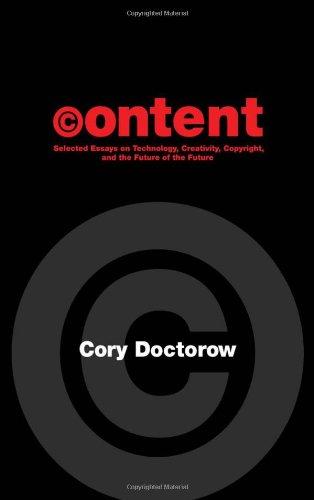
Content: Selected Essays on Technology, Creativity, Copyright, and the Future of the Future
by
Cory Doctorow
Published 15 Sep 2008
(Originally published as "How Big Media's Copyright Campaigns Threaten Internet Free Expression," InformationWeek, November 5, 2007) Giving it Away (Originally published on Forbes.com, December 2006) Science Fiction is the Only Literature People Care Enough About to Steal on the Internet (Originally published in Locus Magazine, July 2006) How Copyright Broke (Originally published in Locus Magazine, September, 2006) In Praise of Fanfic (Originally published in Locus Magazine, May 2007) Metacrap: Putting the torch to seven straw-men of the meta-utopia (Self-published, 26 August 2001) Amish for QWERTY (Originally published on the O'Reilly Network, 07/09/2003, http://www.oreillynet.com/pub/a/wireless/2003/07/09/amish qwerty.html) Ebooks: Neither E, Nor Books (Paper for the O'Reilly Emerging Technologies Conference, San Diego, February 12, 2004) Free(konomic) E-books (Originally published in Locus Magazine, September 2007) The Progressive Apocalypse and Other Futurismic Delights (Originally published in Locus Magazine, July 2007) When the Singularity is More Than a Literary Device: An Interview with Futurist-Inventor Ray Kurzweil (Originally published in Asimov's Science Fiction Magazine, June 2005) Wikipedia: a genuine Hitchhikers' Guide to the Galaxy — minus the editors (Originally published in The Anthology at the End of the Universe, April 2005) Warhol is Turning in His Grave (Originally published in The Guardian, November 13, 2007) The Future of Ignoring Things (Originally published on InformationWeek's Internet Evolution, October 3, 2007) Facebook's Faceplant (Originally published as "How Your Creepy Ex-Co-Workers Will Kill Facebook," in InformationWeek, November 26, 2007) The Future of Internet Immune Systems (Originally published on InformationWeek's Internet Evolution, November 19, 2007) All Complex Ecosystems Have Parasites (Paper delivered at the O'Reilly Emerging Technology Conference, San Diego, California, 16 March 2005) READ CAREFULLY (Originally published as "Shrinkwrap Licenses: An Epidemic Of Lawsuits Waiting To Happen" in InformationWeek, February 3, 2007) World of Democracycraft (Originally published as "Why Online Games Are Dictatorships," InformationWeek, April 16, 2007) Snitchtown (Originally published in Forbes.com, June 2007) Dedication For the founders of the Electronic Frontier Foundation: John Perry Barlow, Mitch Kapor and John Gilmore For the staff — past and present — of the Electronic Frontier Foundation For the supporters of the Electronic Frontier Foundation Introduction by John Perry Barlow San Francisco - Seattle - Vancouver - San Francisco Tuesday, April 1, 2008 "Content," huh? Ha! Where's the container?
…
There would be increasingly little free speech or any consequence, since free speech is not something anyone can own. Fortunately there were countervailing forces of all sorts, beginning with the wise folks who designed the Internet in the first place. Then there was something called the Electronic Frontier Foundation which I co-founded, along with Mitch Kapor and John Gilmore, back in 1990. Dedicated to the free exchange of useful information in cyberspace, it seemed at times that I had been right in suggesting then that practically every institution of the Industrial Period would try to crush, or at least own, the Internet. That's a lot of lawyers to have stacked against your cause.
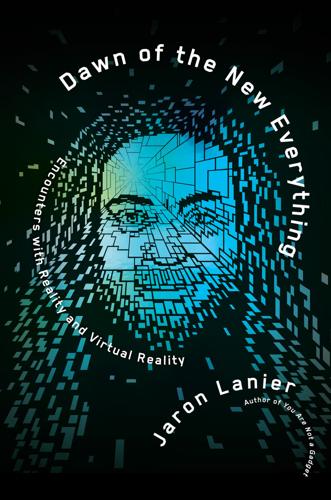
Dawn of the New Everything: Encounters With Reality and Virtual Reality
by
Jaron Lanier
Published 21 Nov 2017
How We Settled into a Seed for the Future Virtual Rights, but Not Virtual Economic Rights In 1990, I was invited to a lunch at a Mexican restaurant in San Francisco’s Mission District to consider cofounding a new organization to fight for cyber rights. Chuck, VPL’s prime hacker, and I went up and met Mitch Kapor, John Gilmore, and Barlow. The three of them eventually moved forward, founding the Electronic Frontier Foundation. But I held back. (Chuck was too busy coding to pay any of us much mind.) I didn’t say why at the time; wasn’t ready to state my doubts to these sweet friends. I support most of the cases the EFF takes on, but not the underlying philosophy.
…
He caught a lot of grief from hackers who wanted an even more extreme vision of hacker supremacy. Before the World Wide Web existed, there was a ubiquitous bulletin-board-like service called Usenet. It had been around since 1980, way before the Internet,5 so it was already a somewhat stale institution by around ’87. That was when it was reorganized by a few people, including John Gilmore, who would become a cofounder of the EFF, to support a chaotic explosion of user-created topics. The anarchic new universe was called the alt. hierarchy.6 Surprise, there was a lot of porn. But this other thing started to happen. Conversation threads in the alt. universe started to get extreme.
…
(The story of how our scale model of a degraded society exploded into mainstream politics and society is told in appendix 3.) I often replay those years in my head. There was one argument, the one about censorship, that drowned out every other notion about how to improve the online world. It was framed in stark all-or-nothing terms. John Gilmore famously said that the ’Net interprets censorship as damage and routes around it. But surely there were other ideas worth considering that wouldn’t have demanded a surrender to censorship. If you had to spend a fraction of a penny each time to post, for instance, even that small commitment would have lent the early ’Net a touch of gravity.
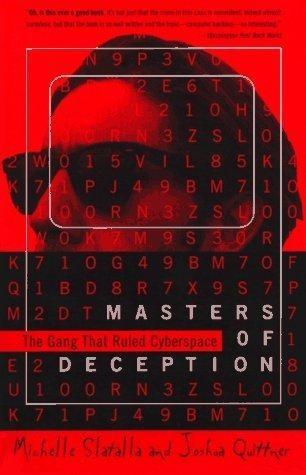
Masters of Deception: The Gang That Ruled Cyberspace
by
Michelle Slatalla
and
Joshua Quittner
Published 15 Jan 1995
She was surprised that Kaiser was calling and that there was a problem with what seemed like such a routine request. Kaiser winced as she explained that the caller said he was a repair technician named John Gilmore who needed a phone number transferred from New York to New Jersey. Of course she'd put through the work order. The request was perfectly ordinary. Kaiser recognized the name John Gilmore: Gilmore was a former hacker who went on to become a millionaire writing code at Sun Microsystems. Kaiser quickly countermanded the work order. Every day was an exercise in frustration. It seemed like the case would drag on forever, and all Kaiser and Staples could do was run around putting out fires.
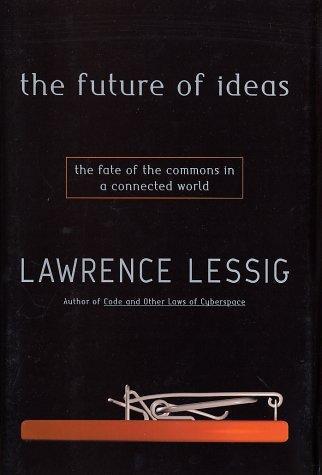
The Future of Ideas: The Fate of the Commons in a Connected World
by
Lawrence Lessig
Published 14 Jul 2001
I am a law professor, but my argument spans computer design to economics. It is no doubt foolish for anyone to try to pull together such a range of material, but I could never have dared to be so foolish without the patient tutoring of many different people. Among these, I am most grateful to my colleagues at the Electronic Frontier Foundation, including John Gilmore and John Perry Barlow; and the Center for Public Domain, especially Laurie Racine and Bob Young. Jeff Chester of the Center for Media Education and Mark Cooper of the Consumers Union taught me a great deal about media policy and the passion of this struggle. There is a long list of technical experts who have struggled to show me how the network works.
…
Rather than “wait and see,” the law has become the willing tool of those who would protect what they have against the innovation the Net could promise. The law is the instrument through which a technological revolution is undone. And since we barely understand how the technologists built this revolution, we don't even see when the lawyers take it away. As activist and technologist John Gilmore has put it, in a line that captures the puzzle of this book: “[W]e have invented the technology to eliminate scarcity, but we are deliberately throwing it away to benefit those who profit from scarcity. . . . I think,” Gilmore continues, “we should embrace the era of plenty, and work out how to mutually live in it.”5 LATE IN THE afternoon of one of California's inevitably beautiful days, Marc Andreessen was driving along one of California's inevitably overcrowded highways.
…
Cir., 2001). 3 Testimony of Professor Peter Jaszi, The Copyright Term Extension Act of 1995: Hearings on S.483 Before the Senate Judiciary Committee, 104th Cong. (1995), available at 1995 WL 10524355, *6. 4 Oral arguments, United States v. Microsoft, February 26, 2001, available at http:// www.microsoft.com/presspass/trial/transcripts/feb01/02-26.asp. 5 E-mail from John Gilmore, January 19, 2001, to EFF list, on file with author, 6. 6 Telephone interview with Marc Andreessen, December 15, 2000. 7 As Timothy Wu commented to me, “[T]he real successes on the Internet have not been killer apps, but killer platforms. “ E-mail from Tim Wu, June 28, 2001. Not, in other words, amazing but proprietary applications that do extraordinary things, but amazing and open platforms upon which others have been free to build.
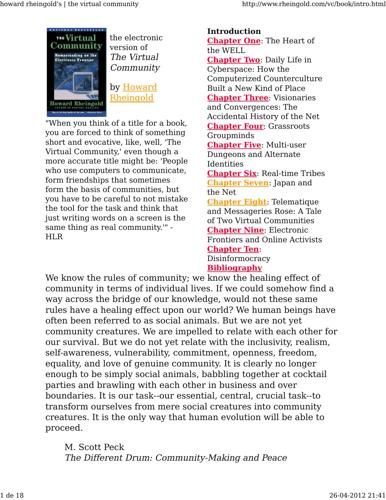
Howard Rheingold
by
The Virtual Community Homesteading on the Electronic Frontier-Perseus Books (1993)
Published 26 Apr 2012
The most important technical attribute of networked BBSs is that it is an extremely hard network to kill--just as the RAND planners had hoped. Information can take so many alternative routes when one of the nodes of the network is removed that the Net is almost immortally flexible. It is this flexibility that CMC telecom pioneer John Gilmore referred to when he said, "The Net interprets censorship as damage and routes around it." This way of passing information and communication around a network as a distributed resource with no central control manifested in the rapid growth of the anarchic 26-04-2012 21:41 howard rheingold's | the virtual community 9 de 18 http://www.rheingold.com/vc/book/intro.html global conversation known as Usenet.
…
Kapor, concerned about the nature of the Sun Devil arrests and what they signaled for civil liberties in cyberspace, offered to support the costs of legal defense. Acid Phreak, Phiber Optik, and their buddy Scorpion were represented by Rabinowitz, Boudin, Standard, Krinsky, and Lieberman. Within days of the Pinedale meeting, Steve Wozniak, cofounder of Apple Computer, and John Gilmore, Unix telecommunications wizard and one of the first employees of the enormously successful Sun Microsystems, offered to match Kapor's initial contributions. A board of directors was recruited that included, among others, WELL founder Stewart Brand. The EFF endowment was intended from the beginning to be a great deal more than a defense fund.
…
The National Security Agency sees this as a security nightmare, when it can no longer do its job of picking strategic signals out of the ether and inspecting them for content that threatens the security of the United States. Certain discoveries in the mathematical foundations of cryptography are automatically classified as soon as a mathematician happens upon them. John Gilmore, one of the founders of the EFF, recently filed suit against the National Security Agency for its classification and suppression in the United States of fundamental cryptography texts that are undoubtedly known to America's enemies. A few days after Gilmore filed suit and informed the press, the agency astonished everybody by declassifying the documents.
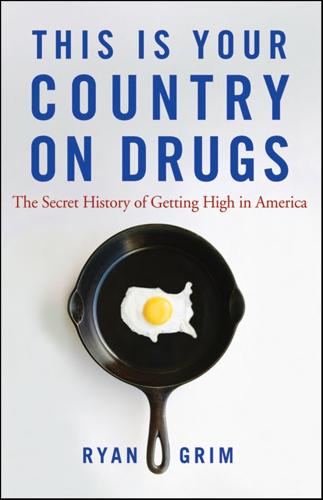
This Is Your Country on Drugs: The Secret History of Getting High in America
by
Ryan Grim
Published 7 Jul 2009
Our camp featured lectures on psychedelics and a “ride” called “Dance, Dance, Immolation.” Players would don a flame-retardant suit and try to dance to the flashing lights. Make a mistake, and you would be engulfed in flames. The first entry on the FAQ sign read, “Is this safe? A: Probably not.” John Gilmore was the fifth employee at Sun Microsystems and registered the domain name Toad.com in 1987. A Burner and well-known psychonaut, he’s certainly one of the mind-blown rich. Today a civil-liberties activist, he’s perhaps best known for Gilmore ’s Law, his observation that “[t]he Net interprets censorship as damage and routes around it.”
…
See also individual names of countries Forrester Research Fourth Amendment Foxy (5-methoxy-diisopropyltryptamine) French Connection Friedman, Milton Furnham, Adrian Further Festival gaming, online Garcia, Elizan Garcia, Jerry Garcia Abrego, Juan Gasser, Peter Gates, Bill Gates, Brad Gates, Daryl Gatien, Peter Gavin, Mary gender issues amphetamines and LSD and opium and Germany Gibbons, Stephen B. Gilmore, John Gilmore’s Law Gingrich, Newt Ginsberg, Allen Goddard, James Goldstein, Paul Gonzales v. O Centro Espirita Beneficiente União do Vegetal Gonzales v. Raich Gonzalez, Henry Gore, Al Gore, Tipper Gorman, Tom Government Executive GQ Graham, Katharine Grateful Dead Green Earth Pharmacy Greenfield, Robert Greenland, Colin Griffee, Vanessa Marie Grinspoon, Lester Grob, Charles grunge bands Guevara, Che Guillermoprieto, Alma Guzmán, Joaquín Hague Opium Convention Haight-Ashbury Haislip, Gene hallucinogens.
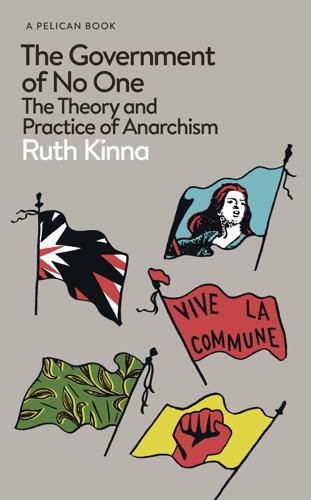
The Government of No One: The Theory and Practice of Anarchism
by
Ruth Kinna
Published 31 Jul 2019
Assata Shakur’s ‘To My People’ is online at http://www.thetalkingdrum.com/tmp.html. 27 Anna Feigenbaum, ‘Death of a Dichotomy: Tactical Diversity and the Politics of Post-Violence’, Upping the Anti, 5, online at http://uppingtheanti.org/journal/article/05-death-of-a-dichotomy/ [17 June 2017]. 28 Francis Dupuis-Déri and Thomas Déri, Anarchy Explained to My Father, trans. John Gilmore (Vancouver: New Star Books, 2017), p. 79. 29 Uri Gordon, Anarchy Alive! Anti-Authoritarian Politics from Practice to Theory (London: Pluto, 2008), ch. 1. 30 Quoted in Michael Loadenthal, The Politics of Attack: Communiqués and Insurrectionary Violence (Manchester: Manchester University Press, 2017), p. 145. 31 CrimethInc., podcast #9, No Time to Wait, online at https://crimethinc.com/podcast/9 [last access 8 October 2018]. 32 Loadenthal, The Politics of Attack, p. 141. 33 Alfredo Bonanno, Errico Malatesta and Revolutionary Violence (London: Elephant Editions, 2011 [2007]), p. 10. 34 Loadenthal, The Politics of Attack, p. 52. 35 Wolfi Landstreicher, ‘A Violent Proposition: Against the Weighted Chain of Morality’, in Willful Disobedience (Ardent Press, 2009), p. 32. 36 Wolfi Landstreicher, ‘The Question of Organization’, in Willful Disobedience, p. 33. 37 Chicago Anarcho-Feminists, ‘An Anarcho-Feminist Manifesto’ [1971], Anarcho-Feminism: Two Statements (London: Black Bear, 1974), n.p. 38 Anarkismo.net established May Day 2005, online at https://anarkismo.net/about_us. 39 IAF Principles, online at http://i-f-a.org/index.php/principles [last access 5 July 2017]. 40 Zabalaza, online at https://zabalaza.net/home/ [last access 8 October 2018]. 41 About the IWW, online at https://iww.org/content/about-iww [last access 5 July 2017]. 42 The Statutes of Revolutionary Unionism (IWA), IV Goals and Objectives of the IWA, online at http://www.iwa-ait.org/content/statutes [last access 5 July 2017]. 43 For a discussion see Peter Gelderloos, ‘Insurrection v.
…
Armand (trans. and ed.), Les Différents Visages de l’anarchisme (Paris: Édition de l’En-dehors, 1927), pp. 56–65. 17 Errico Malatesta, Fra Contadini: A Dialogue on Anarchy, trans. Jean Weir (Catania: Bratach Dubh Editions, 1981 [1884]), p. 3. 18 Francis Dupuis-Déri and Thomas Déri, Anarchy Explained to My Father, trans. John Gilmore (Vancouver: New Star Books, 2017), pp. 199–200. 19 bell hooks, ‘How Do You Practice Intersectionalism?’, an interview with bell hooks, Randy Lowens, June 2009, Common Struggle/Lucha Común, online at http://nefac.net/bellhooks [last access 4 June 2018]. 20 Andrew Stevens, ‘Looking Back at Anger’, an interview with Stuart Christie, 3am Magazine, 2004, online at http://www.3ammagazine.com/politica/2004/apr/interview_stuart_christie.html [last access 15 June 2018]. 21 Steven Pinker, ‘The Moral Instinct’, The New York Times Magazine, 13 January 2008, online at https://www.nytimes.com/2008/01/13/magazine/13Psychology-t.html [last access 4 June 2018]. 22 Peter Kropotkin, ‘Letter to French and British Trade Union Delegates’ [1901], in I.
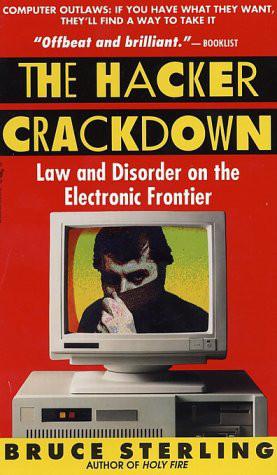
The Hacker Crackdown
by
Bruce Sterling
Published 15 Mar 1992
"Crime and Puzzlement" was distributed far and wide through computer networking channels, and also printed in the Whole Earth Review. The sudden declaration of a coherent, politicized counter-strike from the ranks of hackerdom electrified the community. Steve Wozniak (perhaps a bit stung by the NuPrometheus scandal) swiftly offered to match any funds Kapor offered the Foundation. John Gilmore, one of the pioneers of Sun Microsystems, immediately offered his own extensive financial and personal support. Gilmore, an ardent libertarian, was to prove an eloquent advocate of electronic privacy issues, especially freedom from governmental and corporate computer-assisted surveillance of private citizens.
…
This world of decentralized, small-scale nodes, with instant global access for the best and brightest, would be a perfect milieu for the shoestring attic capitalism that made Mitch Kapor what he is today. Kapor is a very bright man. He has a rare combination of visionary intensity with a strong practical streak. The Board of the EFF: John Barlow, Jerry Berman of the ACLU, Stewart Brand, John Gilmore, Steve Wozniak, and Esther Dyson, the doyenne of East-West computer entrepreneurism—share his gift, his vision, and his formidable networking talents. They are people of the 1960s, winnowed-out by its turbulence and rewarded with wealth and influence. They are some of the best and the brightest that the electronic community has to offer.
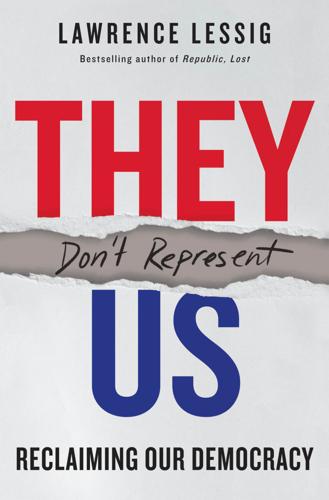
They Don't Represent Us: Reclaiming Our Democracy
by
Lawrence Lessig
Published 5 Nov 2019
See Robert Shapiro and Yaeli Bloch-Elkon, “Political Polarization and the Rational Public,” paper prepared for presentation at the Annual Conference of the American Association for Public Opinion Research, Montreal, Quebec, Canada, May 18–21, 2006, available at link #95. 44.The optimistic: Mike Godwin, Cyber Rights: Defending Free Speech in the Digital Age (Cambridge, MA: MIT Press, 1998); Yochai Benkler, The Wealth of Networks: How Social Production Transforms Markets and Freedom (New Haven, CT: Yale University Press, 2006); Clay Shirky, Here Comes Everybody: The Power of Organizing Without Organizations (New York: Penguin Press, 2008). The dark: Jonathan Zittrain, The Future of the Internet and How to Stop It (New Haven, CT: Yale University Press, 2008); Jaron Lanier, You Are Not a Gadget: A Manifesto (New York: Knopf, 2010). 45.The quote is from John Gilmore, one of the founders of EFF. See “John Gilmore,” Wikipedia, available at link #96. 46.Eli Pariser, The Filter Bubble: How the New Personalized Web Is Changing What We Read and How We Think (New York: Penguin Press, 2011). 47.Zeynep Tufekci, Twitter and Tear Gas: The Power and Fragility of Networked Protest (New Haven, CT: Yale University Press, 2017), 31, 270. 48.David W.
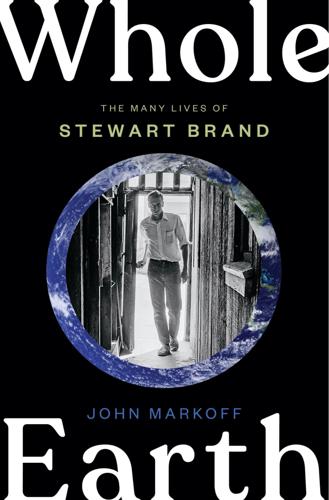
Whole Earth: The Many Lives of Stewart Brand
by
John Markoff
Published 22 Mar 2022
Several years earlier, Kapor and John Perry Barlow (who, in addition to being a Grateful Dead lyricist and a WELL member, was a cattle rancher living in Pinedale, Wyoming) had bonded over the plight of a group of teenagers who had run afoul of the Secret Service for breaking into computers. Several months later, the men met for dinner with Jaron Lanier; Saffo; John Gilmore, a technologist and privacy activist; and Brand. From the dinner came the Electronic Frontier Foundation, dedicated to civil liberties in cyberspace, and Brand was asked to join the board, along with Gilmore, Dyson, and Steve Wozniak. He served on the board for several years, but in the fall of 1994, Brand sent Kapor an email equating the Clock Library to a fragile startup venture that required all of his energies and politely stepped off it.
…
Denis Hayes, the founder of Earth Day, noted Brand’s “trademark” technological optimism in placing his faith in next-generation nuclear power plants: “With a serious commitment, Generation IV reactors might be commercially available by the 2030s, by which time global warming will have cooked our goose if we haven’t already built an economy relying heavily on solar energy, affordable storage, and smart power grids.”[19] * * * W hole Earth Discipline created a reasonable amount of buzz in the new world of social media when it appeared in print. Brand also heard from many of his friends and GBN associates who were uniformly enthusiastic. Traditional environmentalists were not the only ones upset, however. John Gilmore, the cofounder of the Electronic Frontier Foundation, a libertarian and a committed privacy activist, sent a note saying he believed that Brand had fallen into a “doomsday” trap, and he accused him of forsaking his libertarian principles, writing that “it [the threat of global warming] has inspired in you exactly the same response—to throw away your reason and your principles. . . .”
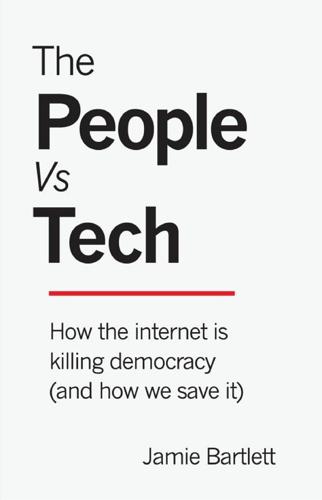
The People vs Tech: How the Internet Is Killing Democracy (And How We Save It)
by
Jamie Bartlett
Published 4 Apr 2018
This manifesto of techno-freedom was written by a young Californian called Timothy C. May in the late 1980s. May had made some brilliant breakthroughs in computer memory chip design at Intel, but his real interest was in how this weird new internet would change politics. He worked with mathematician Eric Hughes and computer scientist John Gilmore (internet history buffs will know Gilmore as the creator of the notorious alt Usenet group) to pursue this theme. All three were radical libertarians from California and early adopters of computer technology. While many West Coast liberals were giving well-received talks about the coming age of digital liberation, this more technically informed trio realised that digital technology would more likely create a dystopia of ubiquitous state espionage and control.
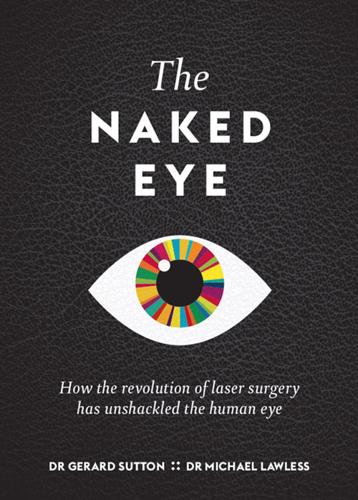
The Naked Eye: How the Revolution of Laser Surgery Has Unshackled the Human Eye
by
Gerard Sutton
and
Michael Lawless
Published 15 Nov 2013
Thank you to Dr Geoff Cohn, my mentor in developing-world ophthalmology, who, together with Sister Barbara Roberts, has shared with me and guided me through what, at times, seemed like the insurmountable challenges of practising ophthalmic surgery in Cambodia and Burma. Also, I would like to thank my co-author, Michael, for being there when it mattered. He will always be my benchmark in surgical expertise. I would also like to thank my friends and fly fishing mentors Henare Dewes, Will Spry, John Gilmore and Rick Arnheim who have introduced me to the mystical rivers of the South Island of New Zealand and shared their vast knowledge with me. Special mention must be made of my parents Gerard and Sylvia for their guidance and example that service and vocation enrich lives. I consider myself most fortunate to have grown up in the wonderful family environment they created.
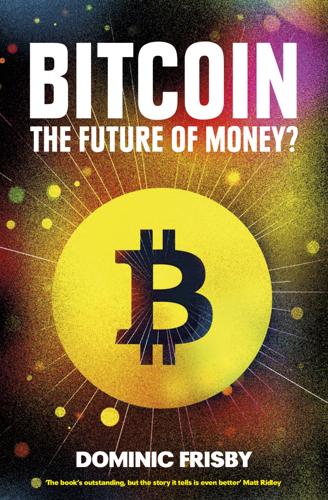
Bitcoin: The Future of Money?
by
Dominic Frisby
Published 1 Nov 2014
The earliest example I can find of Szabo’s proposal dates to 2005, long before Bitcoin, and he begins his blogpost with the line, ‘A long time ago I hit upon the idea of bit gold,’ and there are references to it from many contemporaries, so I can see no reason to doubt the assertion that the idea was hatched in the late 1990s. 32 Morgan E. Peck, ‘The Cryptoanarchists Answer to Cash,’ IEEE Spectrum, May 30, 2012, accessed May,10, 2014, http://bit.ly/1tHFaWR. 33 ‘Bit gold.’ 34 Ian Grigg, Ian Goldberg, David Chaum, Stefan Brands, Steve Schear, John Gilmore, Ryan Lackey, Ben Laurie, Jim McCoy, Bram Cohen, Paul Kocher, Zooko, Adam Shostack, Len Sassaman, Ulf Moeller and the army of cryptographers, from Gavin Andresen to Jeff Garzik and beyond, who helped develop Bitcoin in the open-source community. 35 Satoshi Nakamoto, ‘Bitcoin v0.1 released’, Cryptography Mailing List, January 9, 2009, accessed March 2, 2014, http://bit.ly/1tru7wY. 36 Hal Finney, ‘Bitcoin v0.1 released’, Cryptography Mailing List.
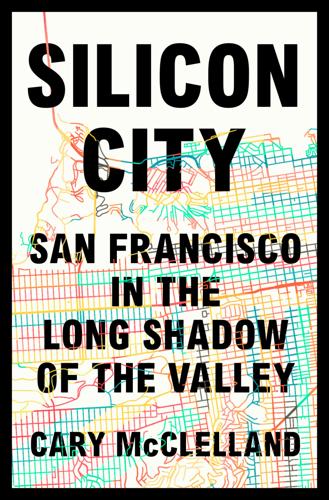
Silicon City: San Francisco in the Long Shadow of the Valley
by
Cary McClelland
Published 8 Oct 2018
But you go to Brazil, and an Indian in a jungle is having similar visions. Drinking ayahuasca is like plugging into the umbilical cord of the planet. Realms that we don’t know how to navigate until people experiment, try. John Perry Barlow. He was such a cowboy—so cool and fun—you couldn’t resist that. He founded the Electronic Frontier Foundation, with John Gilmore and Mitch Kapor, because he didn’t want the government to run away with this new technology. He thought technology should be free. He was never afraid of speaking the truth or confronting “givens.” We would throw parties and bring these incredible people together: filmmakers, computer graphics people, politicians, musicians, hackers.
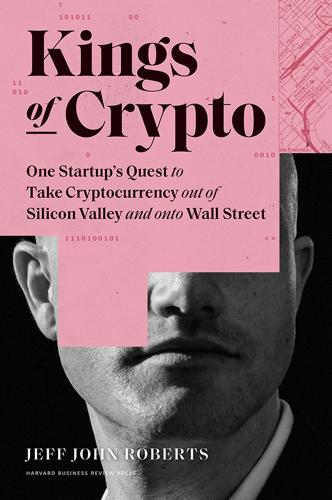
Kings of Crypto: One Startup's Quest to Take Cryptocurrency Out of Silicon Valley and Onto Wall Street
by
Jeff John Roberts
Published 15 Dec 2020
Bitcoin must also be understood by what came before and, in particular, a group of technologists known as cypherpunks. (The word is a portmanteau of cipher—meaning coded messages—and cyberpunk, the sci-fi genre that combines, as one observer put it, “high tech and low life.” Cyberpunk has long been associated with hacker culture.) In 1992, a group of Silicon Valley cypherpunks regularly met at the office of John Gilmore, a software activist and cofounder of the Electronic Frontier Foundation—the web’s version of the American Civil Liberties Union—to talk about how to make the internet more secure. Their discussions continued onto online discussion boards, where cypherpunks chatted about how to extend the internet ideals of security and anonymity to money.
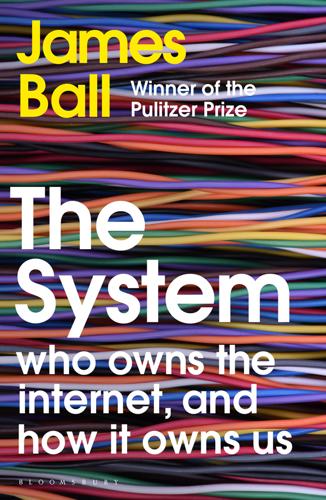
The System: Who Owns the Internet, and How It Owns Us
by
James Ball
Published 19 Aug 2020
Not much goes to waste here. Cohn’s connection to EFF dates right back to 1990; she had studied human rights law through law school, and been interested in that field. By virtue of living in the Bay Area, she fell in with a crowd of people involved in the early internet, before the World Wide Web. These included John Gilmore, an early Sun Microsystems employee, and John Perry Barlow, perhaps best known as the lyricist for the Grateful Dead. Barlow, who died aged seventy in 2018,8 became known through the 1990s as something of an internet visionary, seeing its potential – but also its risks. ‘I honestly believe, without hyperbole, that the people in this room are doing things which will change the world more than anything since the capture of fire,’ he told a room of technologists in 1994.
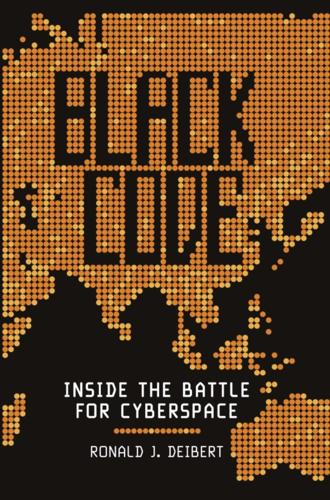
Black Code: Inside the Battle for Cyberspace
by
Ronald J. Deibert
Published 13 May 2013
Rightly or wrongly, those planes smashing into New York’s World Trade Center, the Pentagon, and a field in Pennsylvania were viewed as a failure of cyber intelligence, of authorities not monitoring Internet communications and activities closely enough. At the same time, the prevailing view for most of those connected was that the Internet could not be controlled by governments: “The Net interprets censorship as damage and routes around it,” as John Gilmore, founder of the Electronic Frontier Foundation, once famously quipped. I was not so sanguine. That article has been haunting me for years; it only touched the surface, and has struck me ever since as unfinished business. It was called “Black Code.” National security apparatuses have deeply entrenched, subterranean roots whose spread is difficult to curtail, let alone reverse.
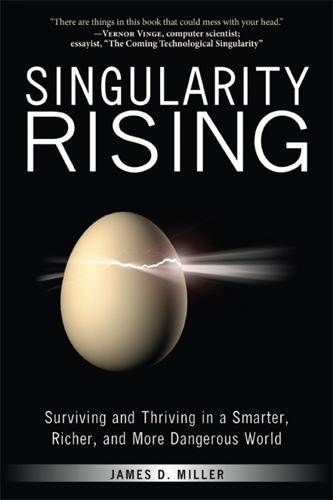
Singularity Rising: Surviving and Thriving in a Smarter, Richer, and More Dangerous World
by
James D. Miller
Published 14 Jun 2012
White House Millennium Council 2000. http://clinton4.nara.gov/Initiatives/Millennium/shawking.html. Hawks, John, Eric T. Wang, Gregory M. Cochran, Henry C. Harpending, and Robert K. Moyzls. 2007. “Recent Acceleration of Human Adaptive Evolution.” PNAS 104 (52): 20753—58. Hazlett, Heather Cody, Michele Poe, Guido Gerig, Rachel Gimpel Smith, James Provenzale, Allison Ross, John Gilmore, and Joseph Piven. 2005. “Magnetic Resonance Imaging and Head Circumference Study of Brain Size in Autism: Birth Through Age 2 Years.” Archives of General Psychiatry 62 (December): 1366—76. Heckman, James J., Jora Stixrud, and Sergio Urzua. 2006. “The Effects of Cognitive and Noncognitive Abilities on Labor Market Outcomes and Social Behavior.”
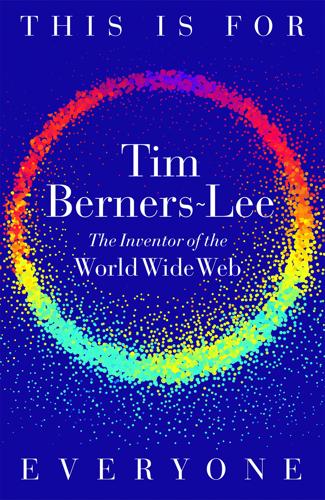
This Is for Everyone: The Captivating Memoir From the Inventor of the World Wide Web
by
Tim Berners-Lee
Published 8 Sep 2025
While I respected the need to go after cybercriminals, I felt it was important that web users had at least a default expectation of privacy. A key actor in this drama was the Electronic Frontier Foundation, a non-profit organization that was created in 1990 to fight for rights on the net by Mitch Kapor, John Gilmore and John Perry Barlow, the author of ‘A Declaration of the Independence of Cyberspace’. The EFF’s deputy director, Danny Weitzner, soon left to co-found the Center for Democracy and Technology (CDT), which in turn joined W3C to add its weight to the drive for civil liberties on the web. At one point we were looking for a leader for W3C’s Technology and Society domain, and Danny, on behalf of CDT, was very keen that the right person should get the job.
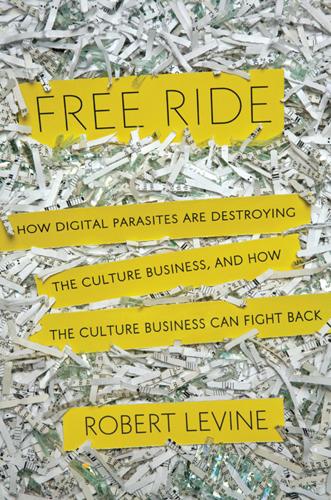
Free Ride
by
Robert Levine
Published 25 Oct 2011
But he tapped into a powerful strain of Silicon Valley libertarianism that rejects any form of Internet regulation—except, in most cases, when it happens to help the technology business itself. Whatever its logical flaws, Barlow’s thinking became influential in shaping the idea of “online rights” as somehow distinct from those in the physical world, a concept that lacks much real legal support. In 1990, Barlow had started the Electronic Frontier Foundation with the activist John Gilmore and Mitch Kapor, who had designed the early PC program Lotus 1-2-3 and founded the Lotus Development Corporation. The organization was founded to defend civil liberties online, it works to protect privacy and free speech, and it maintains more independence from big technology companies than most other online advocacy groups.
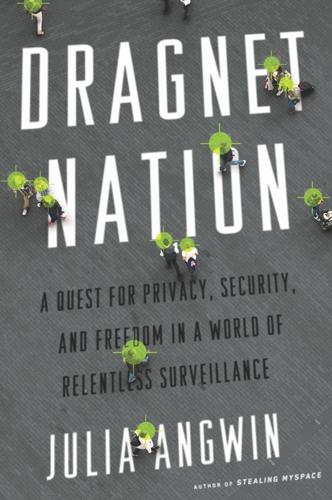
Dragnet Nation: A Quest for Privacy, Security, and Freedom in a World of Relentless Surveillance
by
Julia Angwin
Published 25 Feb 2014
Without their work, we would not know where our data was going, nor would we have any tools to protect it. Among the many who have guided my work and thinking are Ashkan Soltani, Dave Campbell, Jacob Appelbaum, Brian Kennish, Jon Callas, Michael J. J. Tiffany, Mike Perry, Christopher Soghoian, Dan Kaminsky, and Jonathan Mayer. Special thanks to John Gilmore, who offered my first window into this world so many years ago and whose story I still hope to tell in the fullness that it deserves. I also was lucky that my publishing village was run by excellent leaders. My agent, Todd Shuster, was my savior on many fronts—but most importantly by urging me to make the book more personal.
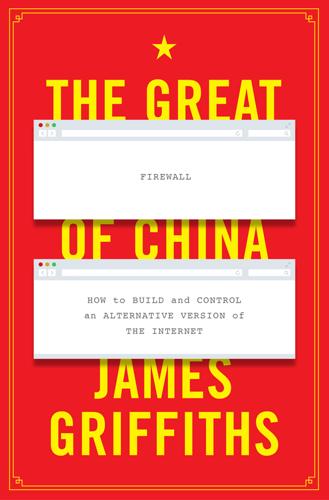
The Great Firewall of China
by
James Griffiths;
Published 15 Jan 2018
“Digital technology is … erasing the legal jurisdictions of the physical world and replacing them with the unbounded and perhaps permanently lawless waves of cyberspace,” he wrote in Wired, going on to endorse a concept he credited to Brand that would become the battle cry for their fellow techno-libertarians: “information wants to be free”.22 Just as he evangelised the freedom enabled by the internet, Barlow attacked the forces that sought to rein it in, like the US National Security Agency, which, he presciently argued, “meticulously observes almost every activity undertaken and continuously prevents most who inhabit its domain from drawing any blinds against such observation”.23 In 1990, Barlow recruited Mitch Kapor and John Gilmore, two tech moguls who got rich in the first Silicon Valley boom, and founded the Electronic Frontier Foundation (EFF),24 an organisation dedicated to “defending civil liberties in the digital world”.25 The three were soon joined by a host of Valley luminaries, and major corporate players, including Microsoft and HP, became donors.
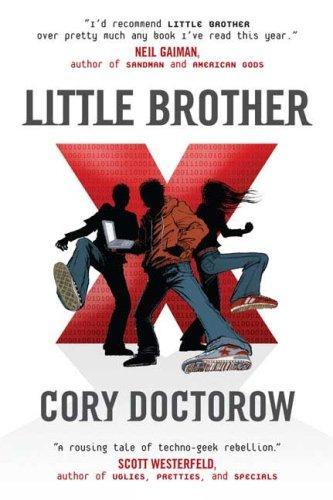
Little Brother
by
Cory Doctorow
Published 29 Apr 2008
. &&& Acknowledgments This book owes a tremendous debt to many writers, friends, mentors, and heroes who made it possible. For the hackers and cypherpunks: Bunnie Huang, Seth Schoen, Ed Felten, Alex Halderman, Gweeds, Natalie Jeremijenko, Emmanuel Goldstein, Aaron Swartz For the heroes: Mitch Kapor, John Gilmore, John Perry Barlow, Larry Lessig, Shari Steele, Cindy Cohn, Fred von Lohmann, Jamie Boyle, George Orwell, Abbie Hoffman, Joe Trippi, Bruce Schneier, Ross Dowson, Harry Kopyto, Tim O'Reilly For the writers: Bruce Sterling, Kathe Koja, Scott Westerfeld, Justine Larbalestier, Pat York, Annalee Newitz, Dan Gillmor, Daniel Pinkwater, Kevin Pouslen, Wendy Grossman, Jay Lake, Ben Rosenbaum For the friends: Fiona Romeo, Quinn Norton, Danny O'Brien, Jon Gilbert, danah boyd, Zak Hanna, Emily Hurson, Grad Conn, John Henson, Amanda Foubister, Xeni Jardin, Mark Frauenfelder, David Pescovitz, John Battelle, Karl Levesque, Kate Miles, Neil and Tara-Lee Doctorow, Rael Dornfest, Ken Snider For the mentors: Judy Merril, Roz and Gord Doctorow, Harriet Wolff, Jim Kelly, Damon Knight, Scott Edelman Thank you all for giving me the tools to think and write about these ideas. &&&$ Creative Commons Creative Commons Legal Code Attribution-NonCommercial-ShareAlike 3.0 Unported CREATIVE COMMONS CORPORATION IS NOT A LAW FIRM AND DOES NOT PROVIDE LEGAL SERVICES.
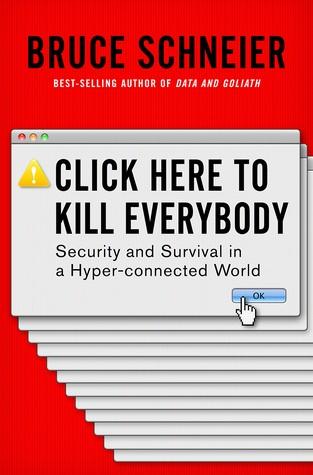
Click Here to Kill Everybody: Security and Survival in a Hyper-Connected World
by
Bruce Schneier
Published 3 Sep 2018
Jason Healey (1 Nov 2016), “The U.S. government and zero-day vulnerabilities: From pre-Heartbleed to the Shadow Brokers,” Columbia Journal of International Affairs, https://jia.sipa.columbia.edu/online-articles/healey_vulnerability_equities_process. 166Instead, it’s making us much less secure: Oren J. Falkowitz (10 Jan 2017), “U.S. cyber policy makes Americans vulnerable to our own government,” Time, http://time.com/4625798/donald-trump-cyber-policy. 167The NSA participated in the process: John Gilmore (6 Sep 2013), “Re: [Cryptography] opening discussion: Speculation on ‘BULLRUN,’” Mail Archive, https://www.mail-archive.com/cryptography@metzdowd.com/msg12325.html. 167“devastating effect” on security: Niels Ferguson and Bruce Schneier (Dec 2003), “A cryptographic evaluation of IPsec,” Counterpane Internet Security, https://www.schneier.com/academic/paperfiles/paper-ipsec.pdf. 167A second example: in the secret: Elad Barkan, Eli Biham, and Nathan Keller (17 Sep 2003), “Instant ciphertext-only cryptanalysis of GSM encrypted communication,” http://cryptome.org/gsm-crack-bbk.pdf. 167Both of these were probably part: Nicole Perlroth, Jeff Larson, and Scott Shane (5 Sep 2013), “Secret documents reveal N.S.A. campaign against encryption,” New York Times, http://www.nytimes.com/interactive/2013/09/05/us/documents-reveal-nsa-campaign-against-encryption.html.
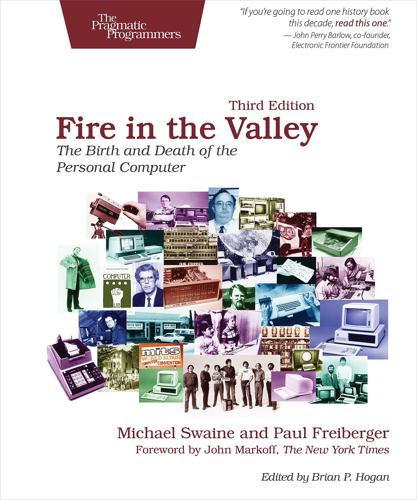
Fire in the Valley: The Birth and Death of the Personal Computer
by
Michael Swaine
and
Paul Freiberger
Published 19 Oct 2014
Barlow and I felt something had to be done.” In 1990 they cofounded the Electronic Frontier Foundation (EFF). They put out the word to a few high-profile computer-industry figures who they thought would understand what they were up to. Steve Wozniak kicked in a six-figure contribution immediately, as did Internet pioneer John Gilmore. Merely fighting the defensive battles in the courts was a passive strategy. EFF, they decided, should play an active role. It should take on proposed and existing legislation, guard civil liberties in cyberspace, help open this new online realm to more people, and try to narrow the gulf between the “info haves” and the “info have-nots.”
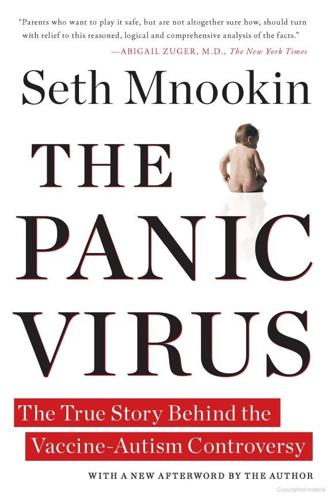
The Panic Virus: The True Story Behind the Vaccine-Autism Controversy
by
Seth Mnookin
Published 3 Jan 2012
group, May 5, 2005, http://groups.yahoo.com/group/EOHarm/message/1496. 211 “once causation is established”: Jim Moody, “An Introduction and a Question,” EOHarm Yahoo! group, April 26, 2005, http://groups.yahoo.com/group/EOHarm/message/344. 212 “Please feel free to share”: David Kirby, “EVIDENCE OF HARM: NYT Science Times ad,” EOHarm Yahoo! group, April 28, 2005, http://groups.yahoo.com/group/EOHarm/message/628. 212 “Two years ago this was the province”: John Gilmore, “Sound the Trumpet—Update,” EOHarm Yahoo! group, April 28, 2005, http://groups.yahoo.com/group/EOHarm/message/719. 212 “Somehow,” Kirby says, Deirdre Imus: David Kirby, interview with author, April 14, 2009. 212 reached more than three million Americans: “Imus Audience Slips in New York but He Still Packs a Punch,” Business Week, April 26, 2005, http://nybw.businessweek.com/the_thread/ brandnewday/archives/2005/04/imus_audience _slips_in_new_york_but_he_ still_packs_a_punch.html. 212 Imus gave Kirby immediate credibility: Don Imus, “David Kirby Interviewed by Don Imus,” Imus in the Morning, MSNBC, March 10, 2005, unofficial transcript. 212 the only health-related story: David Kirby, “Sex and Medicine—Party Favors: Pill Popping as Insurance,” The New York Times, June 21, 2004, F1. 213 He asked about the book’s name: Imus, “David Kirby Interviewed by Don Imus.” 214 “happened to check Amazon”: David Kirby, interview with author, April 14, 2009. 215 “rang[ing] from severely flawed”: Tim Russert, Meet the Press, NBC, August 7, 2005, transcript, http://www.msnbc.msn.com/id/8714275/. 216 In June 2010, the FDA accused Haley: U.S.
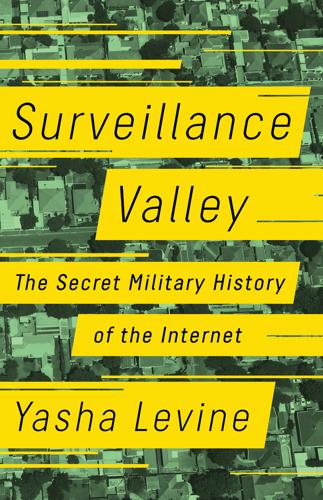
Surveillance Valley: The Rise of the Military-Digital Complex
by
Yasha Levine
Published 6 Feb 2018
Richard Barbrook and Andy Cameron, “The Californian Ideology,” Mute Magazine, September 1995, http://www.metamute.org/editorial/articles/californian-ideology. 102. The Electronic Frontier Foundation was founded by Lotus Notes creator Mitch Kapor, cattle rancher and Grateful Dead songwriter John Perry Barlow, and early Sun Microsystems employee John Gilmore. It started out with a vague mission: to defend people’s civil liberties on the Internet and to “find a way of preserving the ideology of the 1960s” in the digital era. From its first days, EFF had deep pockets and featured an impressive roster: Stewart Brand and Apple’s Steve Wozniak were board members, while press outreach was conducted by Cathy Cook, who had done public relations for Steve Jobs.
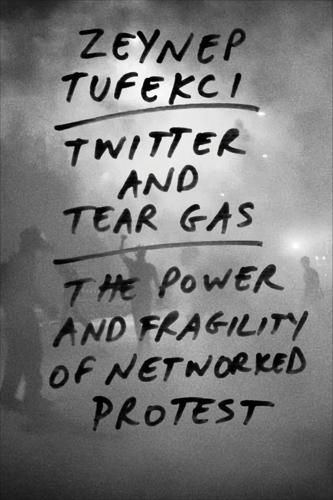
Twitter and Tear Gas: The Power and Fragility of Networked Protest
by
Zeynep Tufekci
Published 14 May 2017
However, digital technologies have also added new dimensions to what the powerful can attempt to repress or demobilize movements. Governments, too, have developed increasingly sophisticated strategies against threats that networked movements in the new public sphere poses to their hold on power, even though they can no longer effectively censor in the old ways; as an oft-quoted aphorism by internet pioneer John Gilmore goes, “The Net interprets censorship as damage and routes around it.”34 There is even a name for the phenomenon of attracting more attention by attempting to hide something, just as Barbra Streisand inadvertently publicized the location of her home by battling to remove images of her mansion from the California Coastal Records Project.
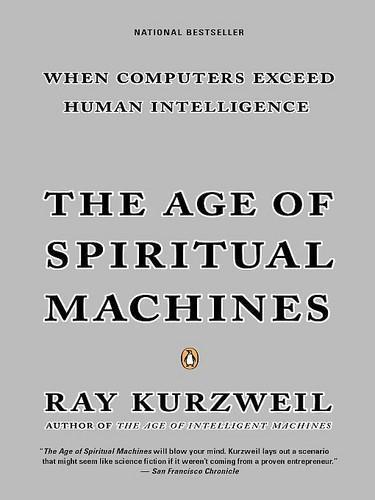
The Age of Spiritual Machines: When Computers Exceed Human Intelligence
by
Ray Kurzweil
Published 31 Dec 1998
A 40-bit encryption method is not very secure. In September 1997, Ian Goldberg, a University of California at Berkeley graduate student, was able to crack a 40-bit code in three and a half hours using a network of 250 small computers. 15 A 56-bit code is a bit better (16 bits better, actually). Ten months later, John Gilmore, a computer privacy activist, and Paul Kocher, an encryption expert, were able to break the 56-bit code in 56 hours using a specially designed computer that cost them $250,000 to build. But a quantum computer can easily factor any sized number (within its capacity). Quantum computing technology would essentially destroy digital encryption.
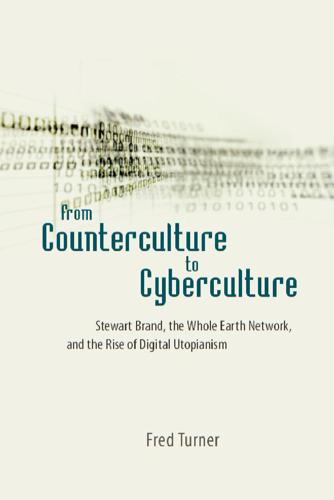
From Counterculture to Cyberculture: Stewart Brand, the Whole Earth Network, and the Rise of Digital Utopianism
by
Fred Turner
Published 31 Aug 2006
The foundation would, in addition, work “to convey to both the public and the policy-makers metaphors which will illuminate the more general stake in liberating Cyberspace.”84 The first and most influential of the metaphors Barlow referred to was the “electronic frontier.”85 Being master networkers, Kapor and Barlow quickly gained press coverage of their new organization as well as offers of funding from Steve Wozniak, cofounder of Apple, and John Gilmore of Sun Microsystems. They started a conference on the WELL, and they recruited Stewart Brand, among others, to serve on their new organization’s board of directors. One evening in the early fall, Barlow convened a dinner in San Francisco attended by Brand, Jaron Lanier, Chuck Blanchard (who worked at VPL with Lanier), and Paul Saffo (head of the Institute for the Future, a Silicon Valley think tank).
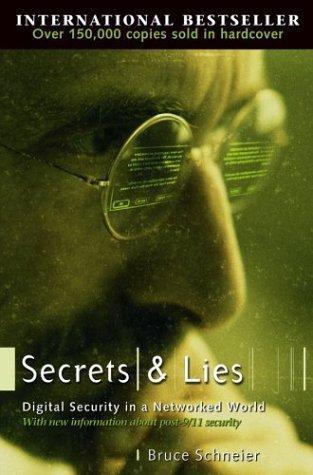
Secrets and Lies: Digital Security in a Networked World
by
Bruce Schneier
Published 1 Jan 2000
It’s just as easy to log on to a computer in Tulsa from a computer in Tunisia as it is from one in Tallahassee. Don’t like the censorship laws or computer crime statutes in your country? Find a country more to your liking. Countries like Singapore have tried to limit their citizens’ abilities to search the Web, but the way the Internet is built makes blocking off parts of it unfeasible. As John Gilmore opined, “The Internet treats censorship as damage and routes around it.” This means that Internet attackers don’t have to be anywhere near their prey. An attacker could sit behind a computer in St. Petersburg and attack Citibank’s computers in New York. This has enormous security implications.
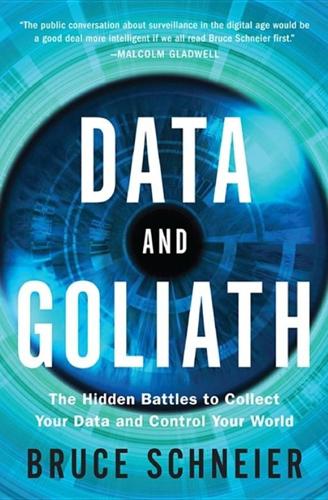
Data and Goliath: The Hidden Battles to Collect Your Data and Control Your World
by
Bruce Schneier
Published 2 Mar 2015
This process allows me to get detailed feedback on the book throughout the process. Many people read all or parts of the manuscript: Ross Anderson, Steve Bass, Caspar Bowden, Cody Charette, David Campbell, Karen Cooper, Dorothy Denning, Cory Doctorow, Ryan Ellis, Addison Fischer, Camille François, Naomi Gilens, John Gilmore, Jack Goldsmith, Bob Gourley, Bill Herdle, Deborah Hurley, Chrisma Jackson, Reynol Junco, John Kelsey, Alexander Klimburg, David Levari, Stephen Leigh, Harry Lewis, Jun Li, Ken Liu, Alex Loomis, Sascha Meinrath, Aleecia M. McDonald, Pablo Molina, Ramez Naam, Peter Neumann, Joseph Nye, Cirsten Paine, David M.
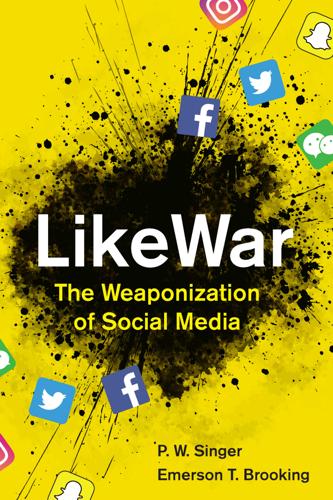
Likewar: The Weaponization of Social Media
by
Peter Warren Singer
and
Emerson T. Brooking
Published 15 Mar 2018
This freedom wouldn’t just sound the death knell of censorship; it would also mark the end of authoritarian regimes that relied on it. After all, what government could triumph against a self-multiplying network of information creators and consumers, where any idea might mobilize millions in a heartbeat? John Gilmore, an early cyber-activist and cofounder of the Electronic Frontier Foundation, put it simply in a 1993 interview: “The Net interprets censorship as damage and routes around it.” For many years, this seemed to be the case. In a dispatch for the newly launched Wired magazine, reporter Bruce Sterling described the key role of an early freedom fighter.
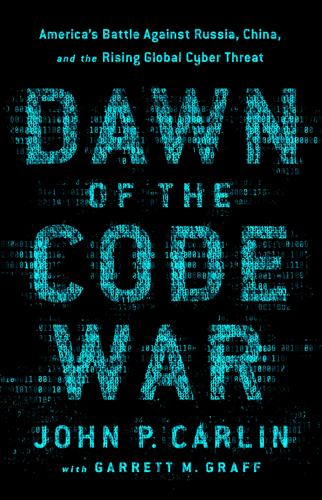
Dawn of the Code War: America's Battle Against Russia, China, and the Rising Global Cyber Threat
by
John P. Carlin
and
Garrett M. Graff
Published 15 Oct 2018
The same year, 1996, that I worked at Freedom House, John Perry Barlow—a former lyricist for the Grateful Dead who been an early participant in the web—authored and posted online a “Declaration of the Independence of Cyberspace,” writing, “Governments of the Industrial World, you weary giants of flesh and steel, I come from Cyberspace, the new home of Mind. On behalf of the future, I ask you of the past to leave us alone. You are not welcome among us. You have no sovereignty where we gather.” Barlow—who with two like-minded digital pioneers, John Gilmore and Mitch Kapor, founded the Electronic Frontier Foundation—believed that the virtual worlds of cyberspace existed beyond the reach of any pedestrian earthly government. “Cyberspace does not lie within your borders,” he wrote. “I declare the global social space we are building to be naturally independent of the tyrannies you seek to impose on us.

The Rough Guide to Jamaica
by
Thomas, Polly,Henzell, Laura.,Coates, Rob.,Vaitilingam, Adam.
Based around the diaries of Thomas Thistlewood, who kept a regular journal during his forty years as a plantation owner in Jamaica, this compelling and accessible book provides a chilling insight into life in the colonial era, from Thistlewood’s obsessive detailing of his sexual exploits to the appalling punishments and routine humiliations he meted out to his slaves. James Ferguson A Traveller’s History of the Caribbean. Concise and well-written overview that John Gilmore Faces of the Caribbean. Excellent and essential sociohistory of the Caribbean, covering everything from slavery to reggae, cricket and the environment. Michelle Harrison King Sugar – Jamaica, the Caribbean and the World Sugar Economy. Solid history of the Jamaican sugar industry – and the fortunes it made for British planters
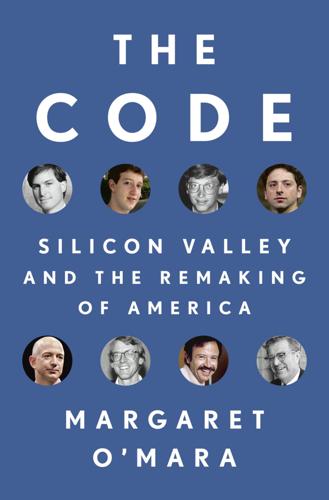
The Code: Silicon Valley and the Remaking of America
by
Margaret O'Mara
Published 8 Jul 2019
Soon after, as Marty Tenenbaum had hoped, the NSF started to pull down the walls of its online garden, changing the terms of its “acceptable use policy” to permit business transactions online.16 Mitch Kapor ran with a crowd that made no bones about its antipathy for government. Along with Barlow, one of his EFF co-founders was John Gilmore. An early Sun Microsystems employee with a net worth in the many millions, Gilmore was a key figure behind the Cypherpunks, a libertarian hacker collective devoted to the pursuit of building cryptography-based monetary and communications systems. The future pursued by the Cypherpunks was an exalted state of “crypto-anarchy,” unbounded by government control.17 Perhaps because he’d always been bouncing back and forth between East and West Coasts, Kapor understood that making change wasn’t always about storming the barricades.
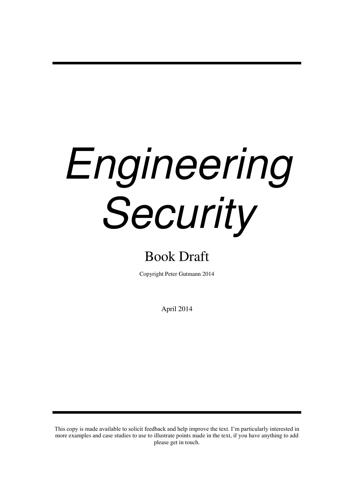
Engineering Security
by
Peter Gutmann
Going beyond the basic security-assessment methodologies are meta-methodologies like the Common Criteria, which employ a notation recovered from a UFO crash site and only understandable by seven people on earth, several of whom mutter to themselves a lot and aren’t allowed near sharp objects because of what they might do with them. The jargon used is so impenetrable that Unix guru John Gilmore, on encountering it for the first time, thought that it had been deliberately and maliciously designed to obfuscate the real meaning of a document “so that nobody reading it can tell what it’s for any more” [4]. The result is something that “requires expert users to work with, and once they’re finished it requires another set of expert users to verify and evaluate the results” [5], something that’s of little value to either the product developers or the product’s users54.
…
References [1] “SSL and TLS: Designing and Building Secure Systems”, Eric Rescorla, Addison-Wesley, 2001. 286 Threats [2] [3] [4] [5] [6] [7] [8] [9] [10] “The Uneasy Relationship Between Mathematics and Cryptography”, Neal Koblitz, Notices of the American Mathematical Society, Vol.54, No.8 (September 2007), p.972. “WYTM?”, Ian Grigg, posting to the cryptography@metzdowd.com mailing list, message-ID 3F886682.1F7817DB@systemics.com, 13 October 2003. “Re: Difference between TCPA-Hardware and other forms of trust”, John Gilmore, posting to the cryptography@metzdowd.com mailing list, messageID 200312162153.hBGLrOds029690@new.toad.com, 16 December 2003. “Cryptographic Security Architecture Design and Verification”, Peter Gutmann, Springer-Verlag, 2004. “Fortress: A History of Military Defence”, Ian Hogg, Macdonald and Jane’s, 1975.